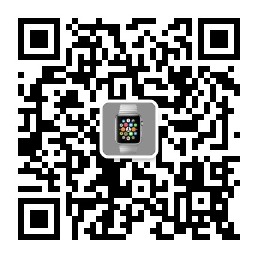The article takes OC as an example. Regular expressions do not distinguish between languages, and the rules in the article are also common in other languages.
Recently, there is a requirement to match a special string in a string, the format is <at open_id="" user_id="">nickname</at>
The regularity I wrote is as follows:
NSString *Regex =@"<at open_id=\"\\w{16}\" user_id=\"\\w{32}\">.{1,10}</at>";Step by step analysis, the first half of the format is fixed: <at open_id=\"\" Since the value of open_id is 16 digits or letters, \w means numbers or letters, so use \w{16}
"\" needs to be escaped in iOS, so one more\
In this way, in the same way, the user_id limit is 32 bits
Then there is the nickname, which may match between 1-10 digits. Use .{1,10}, where "." represents all characters
This will write out the complete expression
Test code:
NSString *str = @"你好瘦猪 <at open_id=\"02PZgYL03okoqnjE\" user_id=\"bf94c94235d311ea9c80acde48001122\">瘦猪</at>你好胖猴<at open_id=\"02PZgYL03okoqnjE\" user_id=\"bf94c94235d311ea9c80acde48001122\">胖猴</at>";method:
NSError *error;
NSRegularExpression *regex = [NSRegularExpression regularExpressionWithPattern:Regex
options:NSRegularExpressionCaseInsensitive
error:&error];
// 执行匹配的过程
NSArray *matches = [regex matchesInString:str
options:NSMatchingReportCompletion
range:NSMakeRange(0, [str length])];
for (NSTextCheckingResult *match in matches) {
NSLog(@"%@",[str substringWithRange:match.range]);
}result:
There are two elements in matches, the correct position is printed out.
You can basically write simple regular expressions after seeing this.
More rules are as follows:
The special symbols'^' and'$'. Their function is to point out the beginning and end of a string separately. If you find a substring from the entire string, you don't need these two rules. If you want to determine whether the complete string meets the rules, it will be used.
Match any character:.
Match letters and numbers: \w
match numbers: \d
match blank characters: \s
"Ab*": Indicates that a string has an a followed by zero or more b ("a", "ab", "abbb",...);
"Ab+": Indicates that a string has an a followed by at least one b or more ("ab", "abbb",...);
"Ab?": Indicates that a string has an a followed by zero or a b ("a", "ab");
"A?b+$": Indicates that there are zero or one a followed by one or several b at the end of the string ("b", "ab", "bb", "abb",...).
"Ab{4}": Indicates that a string has an a followed by 4 b ("abbbb");
"Ab{1,}": Indicates that a string has an a followed by at least 1 b ("ab", "abb", "abbb",...);
"Ab{3,4}": Indicates that a string has an a followed by 3 to 4 bs ("abbb", "abbbb").
Then "*" can be represented by {0,}, "+" can be represented by {1,}, and "?" can be represented by {0, 1};
"|" Means "or" operation, which all graduates from junior high school know;
"A|b": Indicates that there is "a" or "b" in a string;
"(A|bcd)ef": means "aef" or "bcdef";
"(A|b)*c": means a string of "a" and "b" mixed with a "c";
The square brackets "[ ]" indicate the conditions that many characters in the brackets must meet, as follows:
"[Ad]": Indicates that a string contains one of lowercase'a' to'd' (equivalent to "a|b|c|d" or "[abcd]");
"^[a-zA-Z]": represents a string beginning with a letter;
"[0-9]a": means a number before a;
Remarks:
The above example uses the regular expression class (NSRegularExpression), which will return an array.
This method returns the position information of the first matching substring :
Get the position of the substring in the complete string that meets the regular expression rules:
NSRange range = [str rangeOfString:Regex options:NSRegularExpressionSearch];
if (range.location != NSNotFound) {
NSLog(@"range :%@", [str substringWithRange:range]);
}Determine whether the complete string conforms to the regular expression method, and return the bool value:
- (BOOL)validateNumber:(NSString *) textString
{
NSString* number=@"^[0-9]+$";
NSPredicate *numberPre = [NSPredicate predicateWithFormat:@"SELF MATCHES %@",number];
return [numberPre evaluateWithObject:textString];
}
Pay attention to the IT aesthetics of the official account and get more interesting technologies
